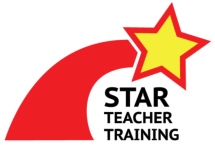We all have to move, kids included. It’s a basic fact of life but one that’s often ignored in schools and offices. The lack of movement in classes is one of the key causes of difficulties with ESL classroom management and lowered learning outcomes – for children and adults. You can dramatically improve your lessons by letting students shake it out a bit with variety of activities.
You’ve probably experienced the need to move in your own studies. I’m currently studying Vietnamese in long two hour blocks. After 30 minutes in a chair I’m antsy. Another 30 minutes and I’m practically crazy. One of two things happen; I get tired and sleepy or I get restless. The only thing that cures this is the chance to stand up, move my arms, or let out some energy in another way.
The same is true for our students, but it gets even more extreme the younger they are. Kids, especially boys, are rivers of enthusiasm and energy. Blocking them both discourages them and leads to behavior problems. The students’ energy overflows and goes to unproductive outlets. Both you and the student have to expend more and more mental energy focusing on just focusing.

I’ve seen this a lot in classes that I’ve observed and taught. For very young learners (VYLs) even 5 or 10 minutes of sitting still can be too much in class. They start to wiggle in their chairs, poke their friends, look around, zone out, or act out in other ways.
The same is true for early primary learners. Most of them can’t sit still for more than 10 minutes without struggling – a lot of boys struggle with sitting still for even close to 10 minutes. By fourth grade most of the students have gotten used to sitting, but that doesn’t mean they should be still for more than 20 minutes at a time.
Does this mean your kids need to run around the room like wild dogs? No.
Fortunately there’s a lot you can do while students are packed into their desks. This week I’ll be introducing several activities that make great use of movement while also involving everyone in effective listening practice. By regularly mixing these and other activities into your lessons you’ll make it easier for your kids to focus, have fun, behave well, and learn.
Do you know any activities that get kids to move? Please share in the comments below.
Please also like and share to spread the word.






